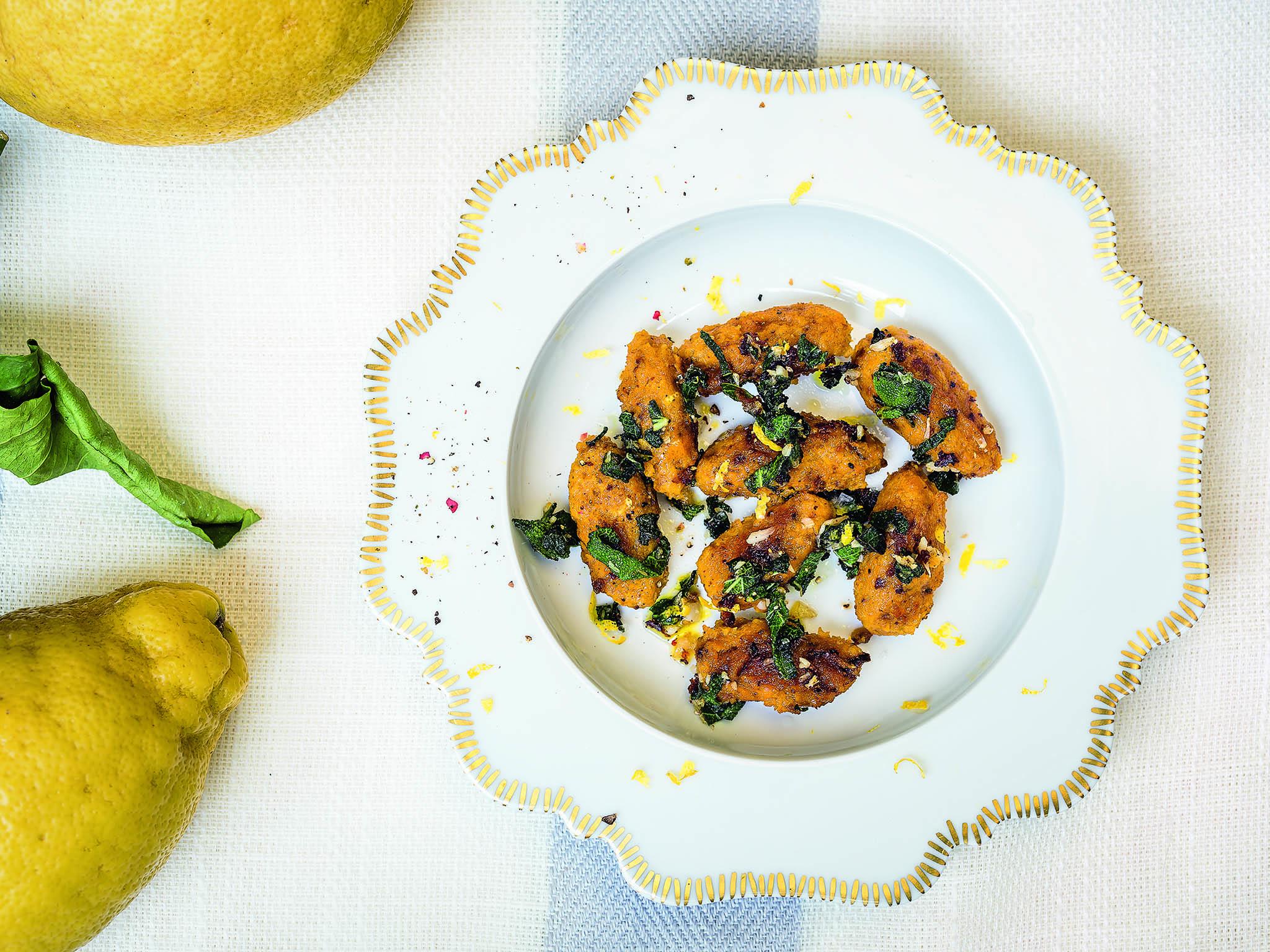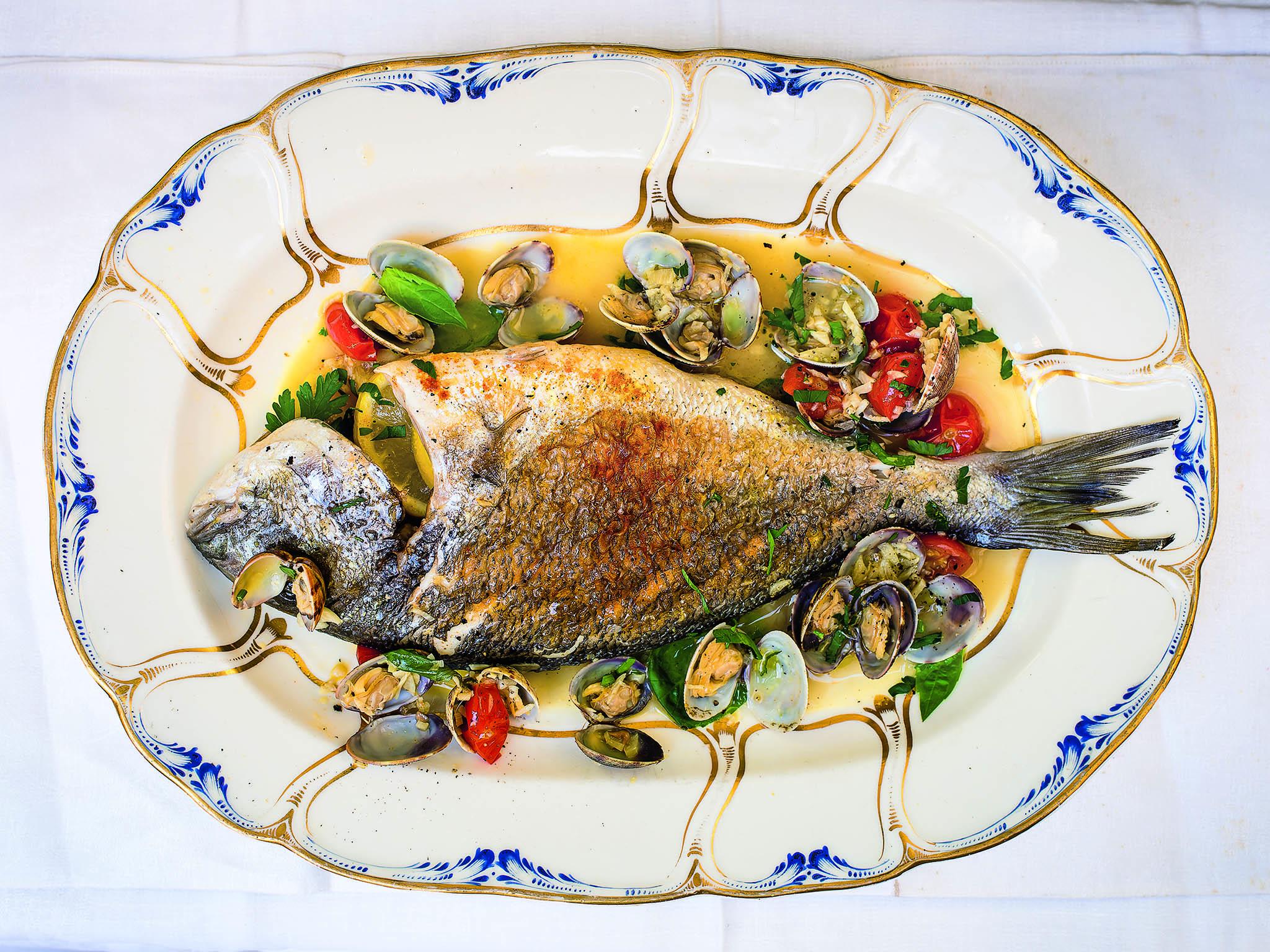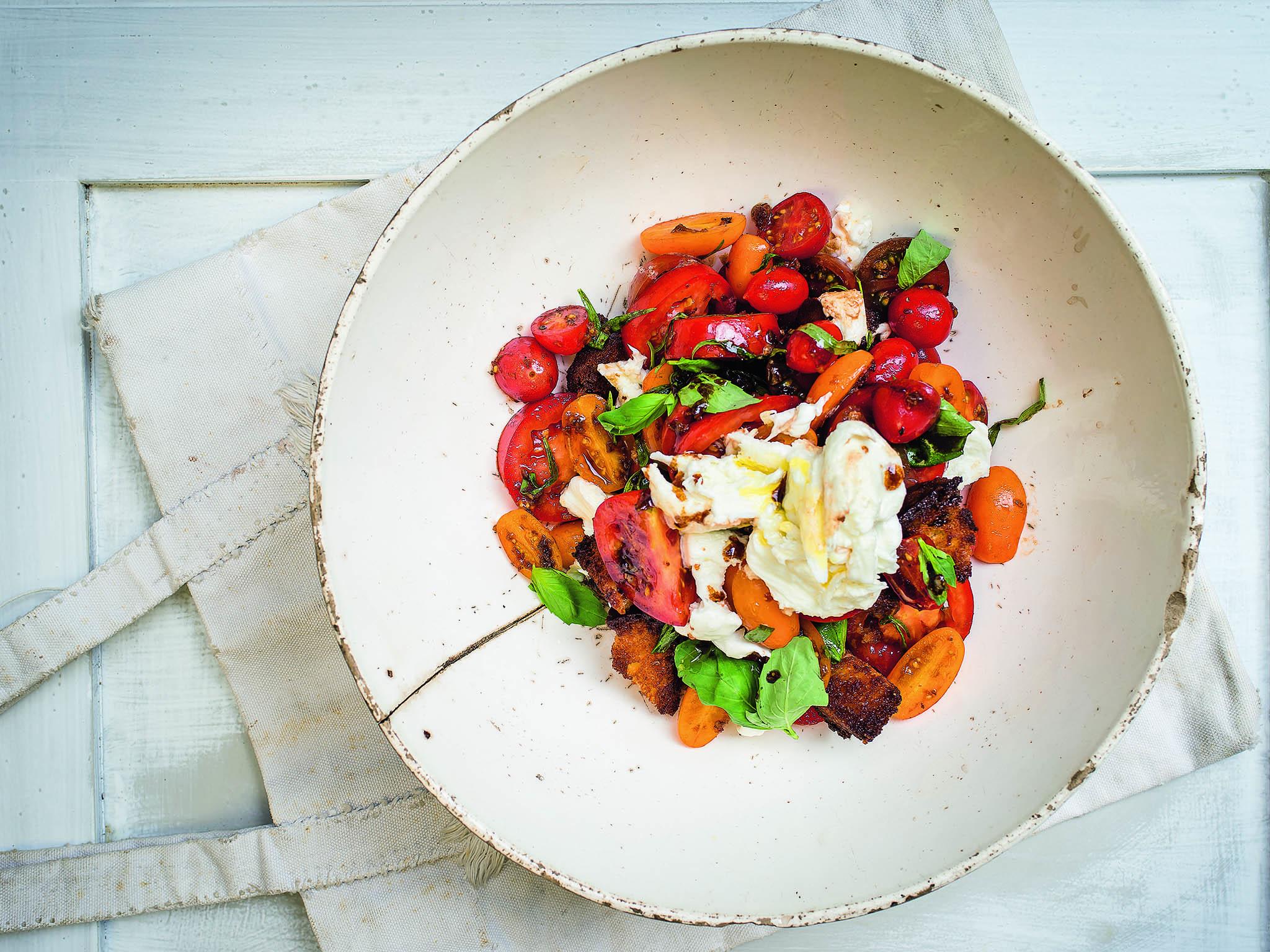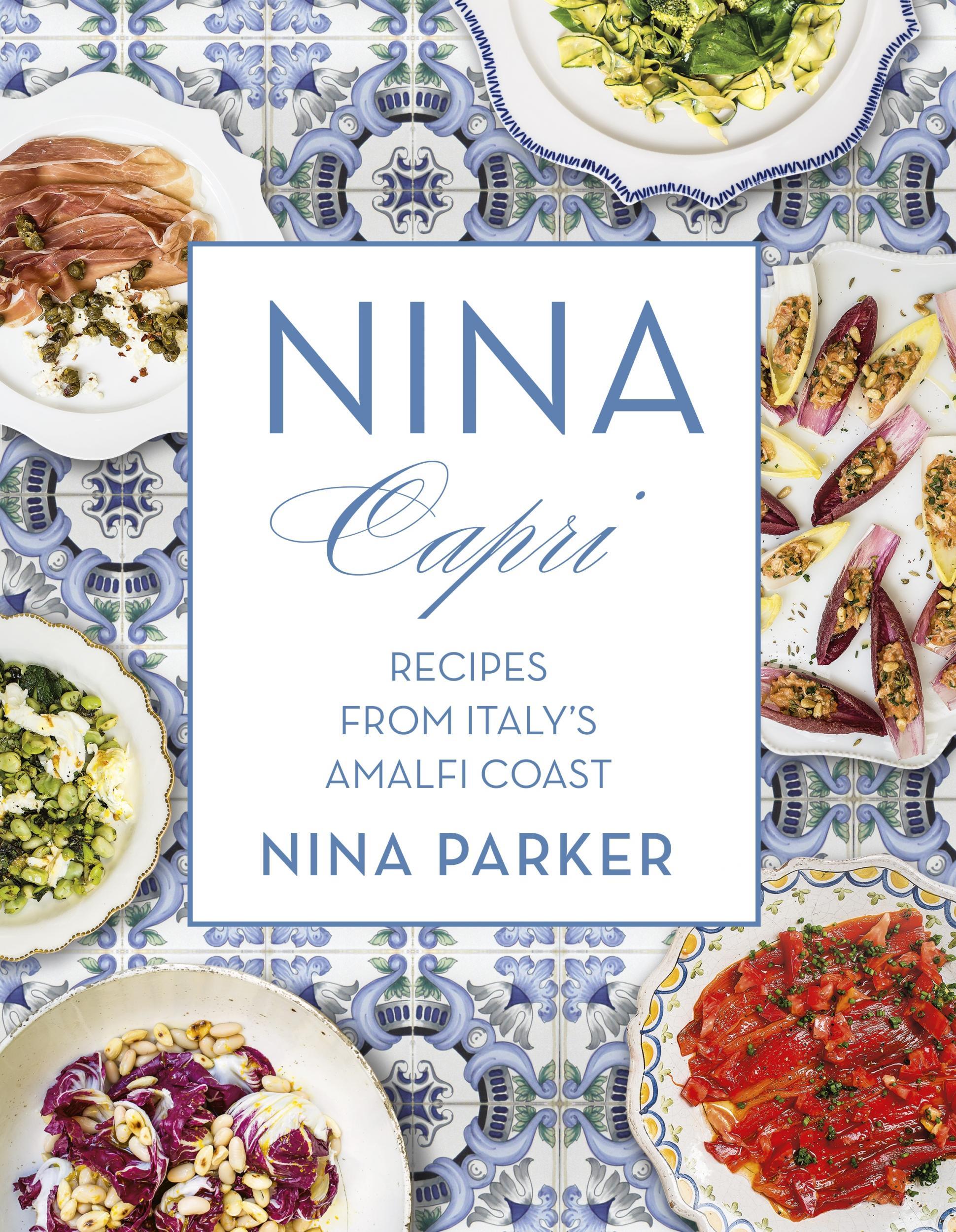Capri: Recipes from Italy’s Amalfi Coast
Chef Nina Parker draws on her passion for this part of the world and her Italian training to create the old-world charm of Italy’s most dramatic coastline in her second book, ‘Capri’

Your support helps us to tell the story
This election is still a dead heat, according to most polls. In a fight with such wafer-thin margins, we need reporters on the ground talking to the people Trump and Harris are courting. Your support allows us to keep sending journalists to the story.
The Independent is trusted by 27 million Americans from across the entire political spectrum every month. Unlike many other quality news outlets, we choose not to lock you out of our reporting and analysis with paywalls. But quality journalism must still be paid for.
Help us keep bring these critical stories to light. Your support makes all the difference.
Uncovering recipes that locals have been enjoying for years, Nina Parker is able to create modern day versions that include gluten and dairy-free options, making her recipes and the Italian rich cuisine more accessible and slightly healthier.
The book follows traditional Italian eating styles, with sections on colazione, pranzo, aperitivi, antipasti, primi, secondi and sala do dolci – everything from breakfast, appetisers and desserts. There’s also the combination of fish and meat and a healthy dose of lemons, thanks to the fact the citrus fruit grow in abundance in the area, which are used in the same way as salt and pepper. The book is Nina's way of bringing the colourful, home-grown family recipes of the beautiful coastline location closer to your tables. Below are some of the author's favourite recipes from the book.
Gypsy acqua pazza

A version of this recipe was featured in my first book using red mullet, but this was where the story began. Davide Conte, who lives in Ischia, told me that for hundreds of years the peasants or as he called them, gypsies, used to wait patiently until the fishing boats came into the island’s harbour, looking out for any discarded fish from the boats. It’s also folklore that wealthy households would donate fish heads and tails to the poor. Apparently, they would chuck them out of the window. It was these morsels that were then collected and later tossed into a pan with a splash of water, potatoes, olive oil, garlic and possibly spices.
The fish was cooked in a kind of “crazy water” and today this dish has gone from a peasant’s humble recipe to a sophisticated dish of fish, wine, olives, lemon and fresh herbs. My version uses a whole fish that is grilled and then steamed in wine, garlic and anchovies. Clams not only boost the depth of flavour, but they are what I would imagine the gypsies would have foraged for and cooked. This is also delicious with a fresh green salad and roasted courgettes.
Serves 2
1 sea bream (or sea bass),
cleaned and gutted
2 tbsp olive oil olus extra for frying
1 unwaxed lemon, half sliced
5 garlic cloves, diced
3 anchovy fillets
4 cherry tomatoes, halved
8 fresh clams, cleaned
½ glass of white wine
100ml vegetable stock
good pinch of paprika
handful of basil leaves
1 tbsp chopped flat-leaf parsley
sea salt and freshly ground black pepper
Heat a griddle pan over a medium–high heat. Season the fish with olive oil, salt, pepper and tuck the lemon slices into the fish’s cavity. Place the fish on the griddle for 1–2 minutes until golden, then turn over and cook for another 2 minutes. Move the fish carefully onto a plate and put to one side.
Heat a little olive oil in a frying pan large enough to hold the fish over a medium–high heat. Once hot, add the garlic and anchovies. Break up the anchovies with a wooden spoon and allow them to melt down for a minute. Add the tomatoes and stir well for 2 minutes before placing the fish into the pan. Add the clams, wine, stock, paprika, salt and pepper, then cover and cook for 8–10 minutes. The fish is done when the flesh begins to flake away from the bones and the clams have opened. Taste the sauce to check the seasoning. Scatter with basil and chopped parsley and serve immediately.
Squash gnocchi
There are lots of different ways you can make gnocchi but I find many recipes a little too heavy and stodgy. Gnocchi should be like little fluffy pillows that are delicate and full of flavour. These would also be amazing with a simple tomato sauce although I think they speak for themselves.
Serves 2
400g squash or pumpkin, cut into small pieces (this will yield 200–250g when roasted)
2 tbsp extra virgin olive oil
½ tsp turmeric
½ tsp ground cumin
4 tbsp rice flour, lus extra for dusting
3 tbsp beaten free-range egg (about 1 egg)
2 garlic cloves, diced
2 tbsp sage, leaves torn
zest and juice of ½ unwaxed lemon
sea salt and freshly ground black pepper
Preheat the oven to 190°C/375°F/Gas mark 5, and line a baking tray with baking parchment. Put the pumpkin in the tray and season with salt, pepper and 2 tablespoons of olive oil. Bake for about 35 minutes, until golden and soft. Remove from oven and leave to cool completely. Place the pumpkin in a blender along with the spices, flour, beaten egg and blitz to form a paste.
Using 2 teaspoons, shape the paste into a quenelle, lightly dredge the quenelle with flour, then place it on a plate. Repeat with the remaining mixture. At this point, the gnocchi can be frozen then cooked when needed. Bring a large pan of salted water to the boil. Cook the gnocchi in batches for 1–2 minutes, or until they float to the surface of the water. Drain. Place a large frying pan over medium–high heat with the remaining olive oil. Add the garlic and sage, cook for 1 minute, then stir in the gnocchi. Season to taste and add the lemon zest and juice. Divide everything between 2 plates and serve immediately.
Salad Caprese

This is the salad of all tomato salads. There are many stories that date back to 1920 of this recipe, one of which mentions a version appearing in bread. Perhaps the most memorable is the story of King Farouk, the notorious gourmand, who asked for something light and refreshing as an appetiser at the Capri hotel, Quisisana. On his request, he was given a sandwich stuffed with mozzarella, tomatoes and basil. This sandwich later evolved into the classic tomato and mozzarella salad that is now served all over the world. Early on, cow’s milk mozzarella was used in the salad but these days it is often made with Campania’s buffalo milk. This salad is unmistakably Italian thanks to the colours representing the nation’s flag. Even though I adore the classic version, I find this one a little more memorable with its punchy dressing.
Serves 2
225g golden cherry tomatoes, halved
200g tomatoes on the vine, quartered
150g kumato (dark green variety), sliced
handful of tarragon leaves, torn
handful of basil leaves, torn, plus extra to garnish
100g toasted spelt or rye croutons
1 buffalo mozzarella ball (about 200g), torn for the dressing
½ garlic clove, diced
2 anchovies, finely chopped
3 tbsp extra virgin olive oil
2 tbsp balsamic vinegar (aged if possible)
few drops of lemon juice
sea salt and freshly ground black pepper

Start with the dressing. On a chopping board, use the back of a knife to crush the garlic and anchovies together to form a paste. Put the paste in a small bowl along with the remaining dressing ingredients and mix.
For the salad, put all the ingredients except the mozzarella in a large mixing bowl. Pour in half of the dressing and toss well. Divide between 2 bowls and scatter with the torn mozzarella, then drizzle over the remaining dressing. Garnish with extra basil leaves and serve immediately.
Capri, by Nina Parker is published Orion Books, £25
Join our commenting forum
Join thought-provoking conversations, follow other Independent readers and see their replies
Comments